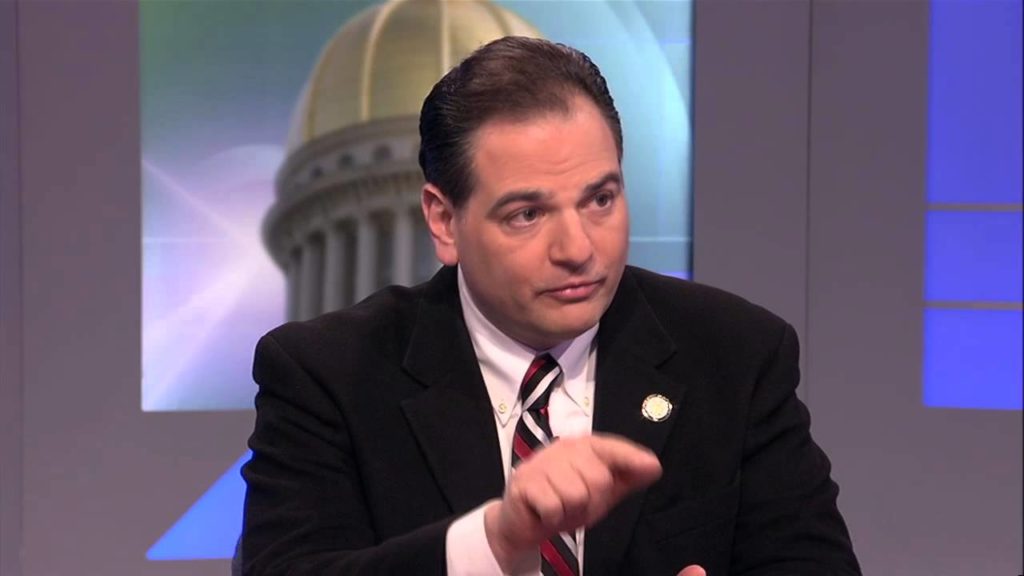NJ Contribution Limits Safe Despite Circuit Court Ruling in Alaskan Case

In my first White Paper research report for ELEC in 1988, I urged that New Jersey adopt contribution limits for all candidates and that those limits be regularly inflation adjusted to withstand a constitutional challenge.
Contribution limits eventually were enacted for non-gubernatorial candidates in 1993. And the legislature required that the limits be raised every four years to offset the cost of living like those that applied to candidates for governor.
Alaska would have done well to follow New Jersey’s example.
The Alaskan legislature set a $1,000 annual limit in 1974, then slashed it to $500 in 2006 in reaction to a referendum supported by 73 percent of Alaskan voters. The Alaskan limit applies to all candidates.
By contrast, New Jersey candidates can now receive $2,600 per election if they are a non-gubernatorial candidate, and $4,900 per election if they are a gubernatorial candidate.
It is no surprise, therefore, that Alaska’s limit was struck down as unconstitutional on July 30, 2021 in a case called David Thompson v. Heather Hebdon.
Before the court’s recent ruling, Alaska voters each year could give only $500 to any candidate versus respective annual contributions of $5,200 or $9,800 in New Jersey.
Amount an Individual Can Give a Candidate*
| Year | Alaska (Per Year) | New Jersey (Per Election) |
| 1974 | $1,000 | No limit |
| 1993 | $1,000 | $1,500 |
| 2006 | $500 | $2,600 |
| 2021 | If there is no further court action, no limit without new legislation | $2,600 |
*Alaskan limit applies to all candidates; NJ limit is for non-gubernatorial candidate
The Hebdon ruling did not overturn contribution limits per se. Rather, the decision, in deference to the Supreme Court’s guidance, overturned Alaska’s limits because they were too low and inconsistent with precedent set forth by the Supreme Court in Randall v. Sorrell.
Justice Stephen Breyer articulated the Court’s rationale in Randall when he observed “contribution limits that are too low . . . harm the electoral process by preventing challengers from mounting effective campaigns against incumbent officeholders; thereby reducing democratic accountability.”
The Vermont limits struck down in Randall ranged from $200 to $400 per election, depending on the office.
In the Alaskan ruling, two members of the Ninth Circuit Court of Appeals, on remand from the U.S. Supreme Court, overrode the court’s chief justice to discard the $500 limit along with two other limits. Among the reasons was that it was among the lowest in the nation and not inflation adjusted.
The ruling reflected the high court’s observations that Alaska’s individual-to-candidate $500 limit “is substantially lower than the limits we have previously upheld,” and “substantially lower than comparable limits in other States.”
Moreover, the limit applied to all offices, “making Alaska’s law the most restrictive in the country in this regard.” Further, the Supreme Court noted that Alaska’s limits were not adjusted for inflation, therefore making them “almost inevitably become too low” over time.
If the Alaska officials decline to appeal and there is no new legislation, an individual in Alaska could give any candidate an unlimited sum. Alaska will be back to where New Jersey was in 1974.
Some might say New Jersey’s current limits are too high.
But in an era when a conservative U.S. Supreme Court is leery of too much governmental intrusion into political fundraising, those higher limits have provided constitutional insurance even though the legislature has not adjusted the non-gubernatorial limits since 2005.
Even though New Jersey’s limits are far higher than those in Alaska, pending legislation could lead to even higher contribution limits or none in the Garden State. The bill is sponsored by state Senate Judiciary Committee Chairman Nicholas Scutari (D-22).
A recent story by Politico reporter Matt Friedman said the bill, which initially called for an end to contribution limits in New Jersey, is facing revisions and may ultimately lead to higher contribution limits instead of total elimination along with quicker disclosure.
In a column written for Insidernj.com in 2019 about the Alaskan case, I disagreed with many in the reformist community who feared that the Supreme Court’s ruling in the case “foretold the Court’s intent to end contribution limits altogether.”
“There appears to be no suggestion in the Court’s per curium opinion that it intends to undue precedent vis-à-vis contribution limits but rather that it desires to have precedent upheld pursuant to its 2006 ruling in Randall v. Sorrell; and by extension by Buckley v. Valeo (1976),” I wrote two years ago.
The recent ruling by the 9th Circuit Court of Appeals in overturning Alaska’s limits bears out my prediction. It was not because the limits are in and of themselves unconstitutional. It is because they are too low under the Randal v. Sorrell precedent cited in the Supreme Court’s ruling involving the Alaskan case.
The Supreme Court’s initial ruling in the Alaska case, followed by the 9th Circuit decision upon remand, supports my opinion expressed in the 2019 column that early fears of the undoing of contribution limits were unfounded.
The U.S. Supreme Court has not been shy about striking down some state laws it considers objectionable,
In another recent case, the U.S. Supreme Court, in Americans for Prosperity Foundation (AFP) v. BONTA, on July 1, 2021, ruled 6-3 as unconstitutional California’s law requiring charitable organizations to disclose major donors to the State’s Attorney General.
But the Alaskan ruling reinforces my belief stated in a more recent column about Bonta that the U.S. Supreme Court under Chief Justice John Roberts would look to precedent in making any decision on the fate of campaign finance laws and in doing so would leave them intact.
“The influence of legal precedent, so embedded in our common law tradition, will play an important role in any future Supreme Court ruling involving campaign finance law,” I wrote.
This logic applies to both cases even though the Alaska case directly concerns an integral part of campaign finance law, namely contribution limits, while the California law involved an issue only tangentially related to campaign finance law.
There have always been and will be challenges to the basic tenets of campaign finance law. But precedents set by Buckley, Citizens United, and other cases upholding disclosure, and the precedent set in Randall upholding reasonable contribution limits, will sustain laws many believe to be in the public interest.
That is why campaign finance laws will stay intact.
Jeff Brindle is the Executive Director of the New Jersey Election Law Enforcement Commission.
The opinions presented here are his own and not necessarily those of the Commission.











Leave a Reply